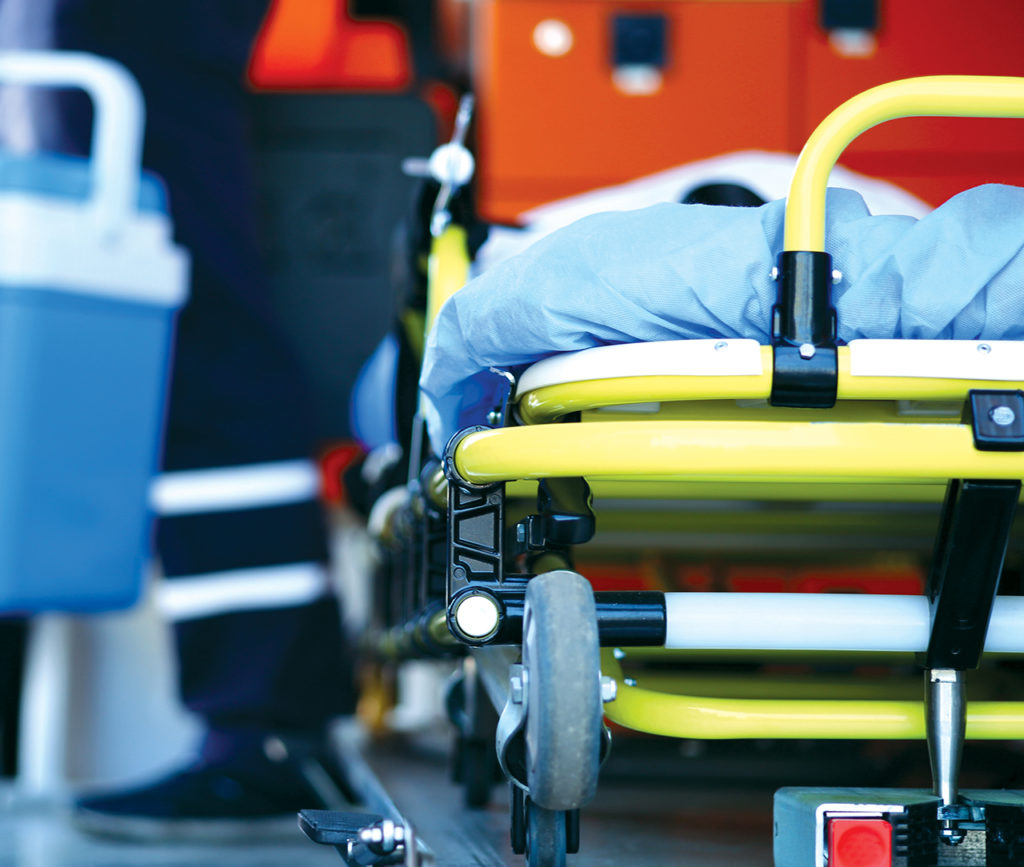About Emergency Preparedness

It’s time to change the way California thinks about disaster response. The COVID-19 pandemic showed that hospitals can quickly mobilize to provide flexible approaches to patient care during a disaster. The state must draw upon these lessons to prepare differently so the next crisis will be less severe. Given California’s size and complexity, the health care disaster response system of the future must be nimble enough to respond to any catastrophe. View more information on hospital disaster preparedness.
Strengthening the Disaster Resilience of the Academic Biomedical Research Community: Protecting the Nation’s Investment
A disaster, whether nature or man-made, can strike anyone anywhere, including an academic research facility.
Health Care Challenges after Radiological Incidents
ASPR TRACIE’s program on the impact of radiological incidents on health and health care provides information and planning strategies related to radiological incidents.
Nerve Agent Protocols for Hospitals
Learn about standard protocols for recognizing, treating, and protecting hospital-based first receivers from nerve agent exposures.
Medical Surge Following a Radiological/Nuclear Mass Casualty Incident
2021 Virtual Disaster Conference
Medical and health preparedness activities rarely address radiological emergencies and the unique attributes of radiological exposure and contamination. Hospitals and local jurisdictions that plan for medical surge of contaminated patients will save thousands of lives without endangering their workforce or disrupting other operations.
Prepare Your Facility for a Chemical Emergency
2022 Disaster Conference
Chemical emergencies can happen at any time at health care facilities. The impact may not only be to the facility but patients, staff, and the surrounding community. To assist hospitals and all health care partners, ASPR/TRACIE has developed a “Chemical Emergency Considerations for Health Care Facilities” resource to assist in preparing and responding to chemical emergencies.
Active Shooter: Recommendations and Analysis for Risk Mitigation
Recent active shooter attacks have illustrated the importance of procedures, systems, and training designed to mitigate the risks from active shooters. These mitigation recommendations are based on analysis of past active shooter attacks, and careful review of previous studies. These mitigation recommendations, which are tailored to building security personnel, are detailed in Part II of this book.
Active Shooter Lockdown: Sample Hospital Policy
An emergency event which threatens the safety of patients, employees, staff, visitors and/or hospital operations may require the lockdown of the Hospital. This sample lockdown guidance document covers entry and exit considerations and also includes an event decision-making tree.
Guidelines for Hospital Active Shooter Incidents
Provided by St. Bernadine Medical Center, this guidance seeks to assist hospitals in active shooter situations. View the flyer with guidance on how to respond when an active shooter is in your vicinity.
Active Shooter Situation Response
This sample Active Shooter Situation Response plan from St. Bernadine Medical Center provides guidance in the event an individual is actively shooting persons in the hospital or on the campus. This emergency response plan was developed to alert hospital staff that an active shooter appears to be actively engaged in killing or attempting to kill people in the hospital or on the hospital campus.
Code Active Shooter: Active Shooter Situation Response
Provided courtesy of Victor Valley Global Medical Center, this document outlines an emergency response plan to alert hospital staff that an active shooter appears to be actively engaged in killing or attempting to kill people in the hospital or on the campus.